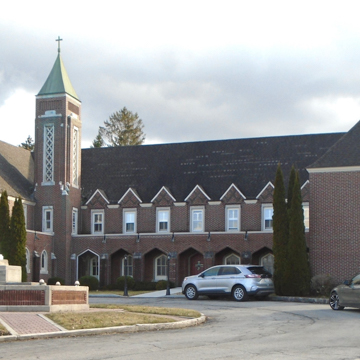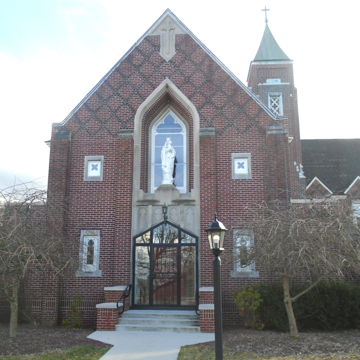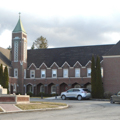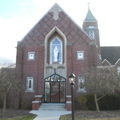This red brick Discalced (barefoot) Carmelite monastery, loosely based on a convent in Lisieux, France, sits on fourteen acres in the Allegheny Mountains. The front of the two-and-one-half-story building is a shallow U shape; at the rear is an enclosed courtyard. Eighteen cells face this interior cloister for the nuns who withdraw from the world to focus intensely on God's work. The steeply sloping roof, diaper-patterned brickwork in the gable end above the chapel, and bell tower evoke the forms of the French monastery. The Discalced Carmelites came to the United States in the 1790s, but when this monastic group was exiled from France in the 1920s, they were invited to the Diocese of Altoona. Charles Schwab's sister, Mary Jane, who took the name Mary Cecelia of the Blessed Sacrament, joined the “barefoot nuns,” and area industrialist Schwab financed this convent in Loretto. Pittsburgh architect Lucian Caste made alterations to the chapel in 1967.
You are here
Carmelite Monastery of St. Therese of Lisieux
If SAH Archipedia has been useful to you, please consider supporting it.
SAH Archipedia tells the story of the United States through its buildings, landscapes, and cities. This freely available resource empowers the public with authoritative knowledge that deepens their understanding and appreciation of the built environment. But the Society of Architectural Historians, which created SAH Archipedia with University of Virginia Press, needs your support to maintain the high-caliber research, writing, photography, cartography, editing, design, and programming that make SAH Archipedia a trusted online resource available to all who value the history of place, heritage tourism, and learning.





